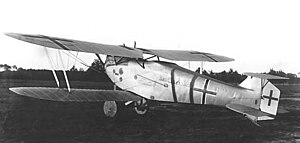
The AEG J.I was a German biplane ground attack aircraft designed and produced by the German aircraft manufacturer Allgemeine Elektrizitäts-Gesellschaft. It was a mission-specific derivative of the AEG C.IV reconnaissance aircraft.

The Albatros C.III was a German two-seat general-purpose biplane of World War I, built by Albatros Flugzeugwerke. The C.III was a refined version of the successful Albatros C.I and was eventually produced in greater numbers than any other C-type Albatros.

The Albatros C.I,, was the first of the successful C-series of two-seat general-purpose biplanes built by Albatros Flugzeugwerke during World War I. Based on the unarmed Albatros B.II, the C.I reversed the pilot and observer seating so that the observer occupied the rear cockpit which was fitted with a ring-mounted 7.92 mm (0.312 in) Parabellum MG14 machine gun.

The Avro 549 Aldershot was a British single-engined heavy bomber aircraft built by Avro.

The Halberstadt D.II was a biplane fighter aircraft developed and manufactured by German aircraft company Halberstädter Flugzeugwerke.

The LFG Roland C.II, usually known as the Walfisch (Whale), was an advanced German reconnaissance aircraft of World War I. It was manufactured by Luft-Fahrzeug-Gesellschaft G.m.b.H.

The Hannover CL.III was a German military aircraft of World War I. It was a two-seat multi-role aircraft, primarily used as a ground attack machine. Like the other Hannover "light-C-class", or "CL" designated aircraft designed by Hermann Dorner, it included an unusual biplane tail, allowing for a greater firing arc for the tail gunner. Until the introduction of the aircraft, such tails had only been used on larger aircraft.
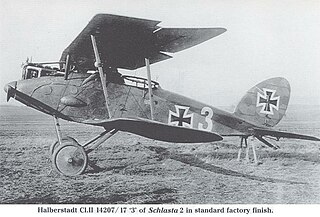
The Halberstadt CL.II was a German two-seat escort fighter/ground attack aircraft of World War I. It served in large numbers with the German Luftstreitkräfte in 1917-18.
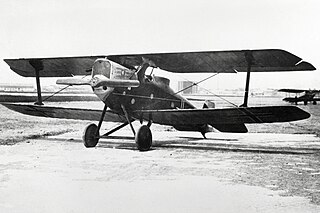
The Hannover CL.V was a biplane ground-attack aircraft built in Germany during World War I, which saw some service and additional production in Norway following the war.

The LFG Roland D.II was a German single-seat fighter of World War I. The type was manufactured by Luftfahrzeug Gesellschaft, and also by Pfalz Flugzeugwerke under license.

The Junkers CL.I was a ground-attack aircraft developed in Germany during World War I. Its construction was undertaken by Junkers under the designation J 8 as proof of Hugo Junkers' belief in the monoplane, after his firm had been required by the Idflieg to submit a biplane as its entry in a competition to select a ground-attack aircraft.

The Albatros C.II was a 1910s German military pusher reconnaissance biplane designed and built by Albatros Flugzeugwerke. Only one aircraft was built and the type did not enter production.
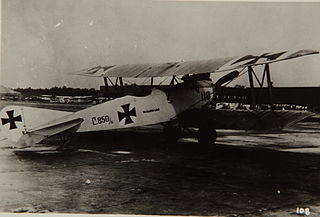
The Albatros C.IV,. was a German military reconnaissance aircraft built in the autumn of 1915 by Albatros Flugzeugwerke. It was a single-engined biplane, and was based on the Albatros C.III, with which it shared many parts. It was eventually abandoned, in favour of the C.V.

The Zeppelin-Lindau Rs.III was a large four-engined monoplane flying boat designed by Claudius Dornier and built during 1917 on the German side of Lake Constance at the Zeppelin-Lindau works.
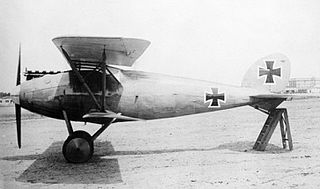
The Albatros C.XIII was a German two-seat, single-engine, biplane light fighter aircraft built in 1917. Only one was constructed.

The Albatros C.XIV was a German two seat, single engine, biplane fighter aircraft built in 1918. Only one was constructed.

The Zeppelin-Lindau CL.II was a German single-engine two-seat biplane with an all metal structure, built by Zeppelin-Lindau during World War I.

The Aviatik C.VIII was a prototype German observation aircraft built by Aviatik in World War I.
The Germania C.I was a prototype two-seat general-purpose biplane built by Halberstadt during World War I.
The Halberstadt C.VIII was a prototype two-seat general-purpose biplane built by Halberstadt during World War I.
